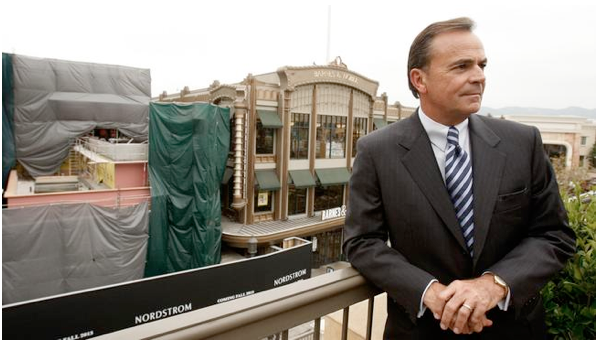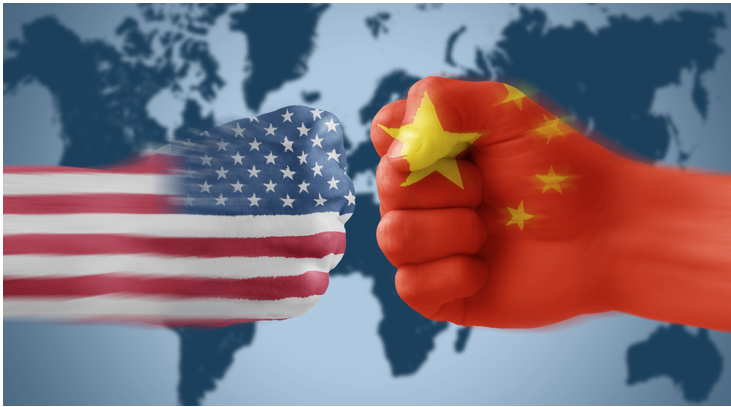WEALTH FORUMLA, PART ONE-The City of Los Angeles has intentionally destroyed the housing market and the result is devastating the entire city. Here we have a prime example of a City government that has so screwed up the Price System for housing that builders are constructing for a market segment in which there is a glut while ignoring the segment that has a shortage.
Developers have been misled into constructing high-end luxury apartments when the demand for that type of housing is falling. Since the City has a net exodus of Middle Class people over people who come here, more housing is available even if no one builds anything. The slight rise in LA’s population is due to the birth rate being higher than the number of people who move away or die. But newborns do not demand more houses and elderly Baby Boomers already have homes. Since people are not “taking their houses with them,” our housing supply is increasing.
Housing costs, however, continue to escalate causing more people to move away, especially Family Millennials who should be the Number One segment of the population to stay here and demand more housing.
Frauds in the Los Angeles Housing Market.
With Family Millennials leaving in droves, why aren’t housing prices falling instead of constantly rising? What are the frauds that falsely deceive Angelenos into thinking there is a huge demand for housing, when in fact the demand is falling?
For a short while, it was the securitization of residential rental income, but it appears that this scam was too much like the fraud that caused the Crash of 2008; financial institutions backed out of this folly.
Although we know the City has been destroying rent-controlled units -- and this fact alone would cause an increase in homelessness, placing upward pressure on rents -- it does not explain the huge increase in the market segment that is over built: higher end apartments.
While younger Millennials still in the Dorm Room Phase of life have been doubling and tripling up in order to rent over-priced apartments, there has still been a 12% glut of these units, per the City’s own data. Yet, rents have continued to increase between 2013 and 2016. The false reporting of alleged vacancy rates has misled people into believing that there is a housing shortage when there has been none. (In order to accurately report rents, they should have been adjusted “per person.” When three single people chip in to pay for a $2,000 apartment, the rent per person is actually lower than when one person pays $800 per apartment. Thus, on a per person basis, rents can be falling while the “per apartment” rents are increasing.)
Belief is Stronger than Fact.
Belief in a housing shortage is another reason for prices to increase year after year while demand decreases. People pay what they believe is the market rate. As in the 2000s, developers have continued to build under the misconception that there has been a housing shortage.
Rental prices are generally provided by real estate companies motivated to keep rents high. Thus, their rental reports are usually based on what they advertise and not on the actual rents collected. Those who saw “The Big Short” will remember how no one was taking the time to go and actually look at all these new homes. When one guy did, he discovered that they were vacant and some people were buying three, four or five homes in the belief they could be flipped in an eternal up-market. Just as Wall Street made people believe there was a huge demand for homes, landlords have issued statistics that make people believe there is a shortage of apartments due to huge demand.
The City of Los Angeles is heavy into this fraud. It keeps lying about the fantastic increases in Hollywood’s population. In April 2016, LA issued a report that the Hollywood population had jumped to 206,000 people and cited the Southern Association of Governments (SCAG) as its source. SCAG had no data about Hollywood population.
Then, in October 2016, the City released an even more mythical figure: Hollywood’s population was 210,511 people at the end of 2015. Wow, that’s a lot of people, but people who had any memory knew that in April 2016 the City had said the population was only 206,000 people. Did the City lose 5,511 people in the first few months of 2016? Of course, since the City’s data is composed of Lies and Myths, no one should expect any of it to make any sense.
There is nothing new Under the Sun.
We have seen this phenomenon previously, prior to the Crash of 2008, when housing prices were rapidly increasing faster than the population was growing. Under the classic laws of Supply and Demand, a downturn in Demand generates reduced Supply as builders realize that the prices for which they can sell new homes will soon be substantially less than the cost to produce them. Yet, the housing market boomed in the face of falling demand – just as we see today.
The boom-bust phases of the business cycle were an immutable fact until John Bernard Keynes wrote his General Theory in 1936. But after fools like Bill Clinton, the U.S. Congress and lastly Obama’s little Timmy Geithner exiled Keynes, we have reverted to the boom-bust phases.
When the government fails to protect the Price System from fraud, no one knows what anything is worth. After Congress’ and Bill Clinton’s repeal of Glass-Steagall and the legalization of Credit Default Swaps, massive fraud destroyed the Price System for homes. It turned out that demand for houses had been exhausted until we raised the productivity of more Americans. Rather than shift investment so that the middle and lower classes could become wealthier, Wall Street rigged the system so that people falsely believed there was this huge demand for residential housing.
The residential housing market was similar to a Ponzi scheme in that the fraud required more and more putative home buyers in order to keep the scam afloat. In time, Ponzi-type schemes always end up demanding more buyers than there are people in the universe.
The Formulas for Wealth.
One need not know that PV = Rn / (1 + r)n and Ck = Rn / (1 + MEC)n are what I call the Wealth Formulas, (but most economists say “marginal efficiency of capital.”) Despite their formidable look, they simply mean that in order for a business to produce wealth, a business must sell its products for more than it costs to produce them.
There is one vital addition -- time. Investments generate wealth over time. Thus, an important principle is not to destroy your business while it is still generating wealth.
Since money is the abstraction by which we figure out what different things are worth, money is the great common denominator of everything a business uses to generate wealth. In other words, if a business person wants to provide for his family, he has to make certain that whatever he makes and sells costs the buyer more than it cost him or her to produce it. This is obvious, and I hope readers are saying, “Duh!”
The Government’s Duty, LA’s Failure.
While businessmen use these concepts daily, most people do not realize the government’s fundamental duty to make certain the formulas actually work. While defending the nation from aggression may be the government’s most important foreign function, protecting the economy is its most vital domestic duty.
The government must make certain that the Price System accurately translates the value of different services and things into dollars. Without a way for a business person to know the value of an employee’s labor, the value of the building he or she rents for his or her business, or the value of the equipment he or she purchases so that his or her employees have the tools to manufacture the product, there is no way for the business person to calculate how much “wealth” his product will generate.
When no one knows the value of goods and services, then no one wants to loan a business person any money, and he or she does not want to borrow any money lest he or she be unable to repay it.
A failure of the Price System means poverty. A correctly functioning Price system means wealth. Thus, the role of all governments is to protect the Price System so that people make sound business decisions.
The City of Los Angeles, however, is guilty of gross dereliction of duty in this regard.
Conclusion of the ‘Wealth Formulas’ Part I.
No one can faithfully serve two masters. The government’s proper role is to provide for the common welfare, not to be beholden to one segment of society. For too long, the City of Los Angeles has been owned by real estate developers. Thus, the City has no process to provide for the quality of life of Angelenos.
The Planning Department has no section on macro-economics. No one knows Adam Smith from Adam West or John Maynard Keynes for a Keys Drug Store. As a result, housing prices are chaotic and we have thousands of units which no one wants, all while suffering a shortage of the type of housing people actually need. The lack of rent-control has swollen the homeless population, while the war against the single-family home has raised prices so high that we have driven away the emerging Middle Class. The situation is beyond critical and there is no reason to forecast any improvement.
(Richard Lee Abrams is a Los Angeles attorney. He can be reached at: [email protected]. Abrams views are his own and do not necessarily reflect the views of CityWatch.) Edited for CityWatch by Linda Abrams.








